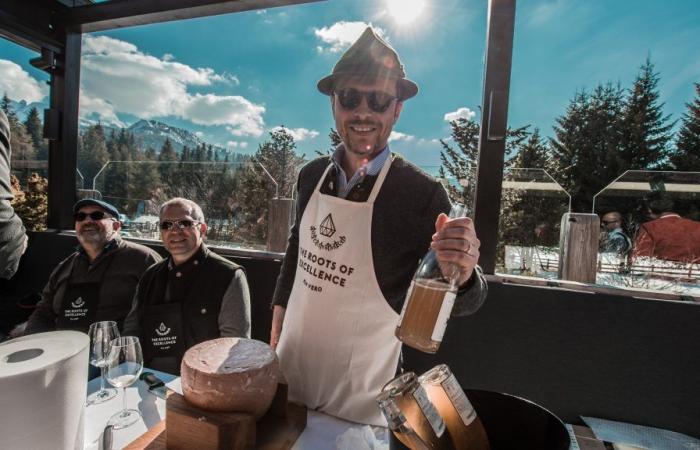L’Alta Badia it was a solitary and isolated valley, which became one of the best-known tourist centers in the Alps. It is 16 kilometers between Val Pusteria, Cortina, Arabba, Val di Fassa and Val Gardena, 3 municipalities and six villages (Corvara, Colfosco, La Villa , San Cassiano, Badia and La Val) for less than 6000 residents, most belonging to the Ladin language and culture community, descended from the Raeti who inhabited these valleys before the arrival of the Romans. Between 1300 and 2778 m, these were poor valleys that lived on subsistence agriculture and livestock farming, but thanks to the beauty of the Dolomites, already in the second half of the 19th century the first “foreigners” arrived to climb the surrounding peaks, some young people specializing in the work of a mountain guide and when, after the end of the war in 1919, Alto Adige became part of the Italian state, a real tourist economy developed: Franz Kostner, famous mountain guide from Alta Badia, was sure that skiing would become one of the most loved and practiced sports. He therefore initially made the valley accessible by means of transport (and not just on foot or on horseback), the first ski school was opened in Corvara and in 1938 the first ski lift in Col Alto: it was a sled lift that took you to the summit people. In 1946, the first chairlift in Italy was built on Col Alto and went into operation in 1947. The rest is history (also told in the LUMEN mountain photography museum at Plan de Corones). Alta Badia has 17 thousand beds and hosted 1 million 400 thousand visitors in the last winter season 2023/2024 and 1 million last summer (data from the provincial statistics institute ASTAT).
A view of Alta Badia.
Big LolloThe UNESCO turning point and a new positioning
«In recent years the turnout has changed, much more international, and the needs of customers have changed» explains Jan Clemens Wieser, nephew of the founder of the Ciasa Salares hotel, who together with his father Stefan, his mother Wilma and his partner Sara , now manages one of the best-known hotels in the area. «The proclamation of the Fanes-Senes-Braies Natural Park and the Puez-Odle Natural Park in the list of UNESCO Natural Heritage has given an incredible boost, especially in the American market and the establishment of the Alta Badia Brand, a new structure that manages marketing tourism and the destination strategy have borne fruit” he tells me. And he adds that years ago it was only Hugo Pizzinini of the Rosa Alpina of Corvara who went around international fairs and thus promoted the destination. Today the Rosa Alpina is under renovation, the reopening is scheduled for the next ski season under the AMAN Resort brand, a multinational which owns some of the most luxurious hotels in the world.





